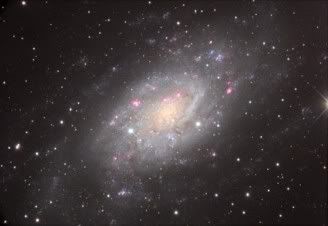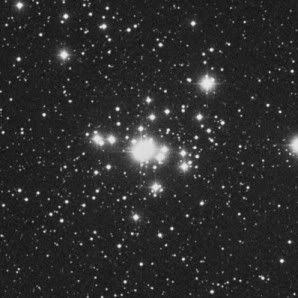|
|
Post by glactus on Feb 17, 2008 10:36:20 GMT
 Although Camelopardalis is the 18th largest constellation, it is not a particularly bright constellation, as the brightest stars are only of fourth magnitude. â Camelopardalis is the brightest star, at apparent magnitude 4.03. This star is a double star, with components of magnitudes 4.0 and 7.4. The second brightest is CS Camelopardalis, of magnitude 4.21 and is slightly variable In approximately 40,000 years Voyager 1 probe will pass within 1.6 light years of the star AC+793888, which is located in Camelopardalis. Notable deep sky objects  NGC 2403 NGC 2403 is a spiral galaxy approximately 11 million light years distant. It is of magnitude 8.4.  NGC 1502 NGC 1502 is a magnitude 6.0 open cluster about 6,800 light years distant. History Camelopardalis has no mythology associated with its stars, as it is a modern constellation, first recorded by Jakob Bartsch. The faintness of the constellation, and that of the nearby constellation Lynx, lead to the early Greeks considering this area of the sky to be empty, and thus a desert.   credits: images: images.google.com.au/imghp?client=firefox-a&rls=org.mozilla:en-US:official&ie=UTF-8&oe=UTF-8&hl=en&channel=s&tab=wi&q=the%20constellation%20of%20camelopardalistext and map: wikipedia en.wikipedia.org/wiki/Camelopardalis |
|